KV Pest Control in Haslemere, Watrlooville & Portsmouth
Domestic and Commercial Pest Control Service
If you have any pest, vermin or rodent problem in Haslemere, Waterlooville, Portsmouth and Havant please contact KV PEST CONTROL. We treat all types of infestation including the pest problems detailed below.
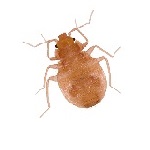 Bed Bugs
Bed BugsBED BUGS HASLEMERE & WATERLOOVILLE
Bed bugs are becoming an increasing problem in this country. Bed Bugs spread very quickly and easily and are difficult to treat. This has caused an upsurge in the number of Bed Bug outbreaks.
Identifying Bed Bugs
Adult Bed Bugs are 5mm long. They are usually found in bedrooms but hide in cracks and crevices during the day. Before feeding they are a flattened oval shape and light brown, but become rounder and darker as they feed. They are nocturnal and are attracted to both the warmth of our bodies and the carbon dioxide in our breath. The most common shelters for Bed Bugs are in the seams of mattresses, in crevices in the bed frame, behind furniture surrounding the bed (especially the headboard) or where the wall meets the floor.
An established infestation will also be associated with an unpleasant scent secreted by bed bugs – hence the need for bed bug control services.
Bed Bug Bites
Bed Bug bites are unlikely to wake up the victim. The bites can occur anywhere on the body but are mainly found close to blood vessels near the skin’s surface. One bed bug may bite more than once around the same area of the body. Bites on different parts of the body usually indicate being bitten by several bed bugs.
At the beginning of a Bed Bug infestation, bites may not feel itchy, making it hard to determine whether bite marks actually originate from Bed Bugs, or another insect. However, small droplets of blood on the sheets definitely indicate the presence of Bed Bugs.
Treating Bed Bug Infestations
Bed Bugs are an objectionable pest and one of the most difficult to eradicate. Deep cleaning, exceptional hygiene and the use of insecticides will help to keep numbers under control, however professional Bed Bug control treatment will be required to eradicate the infestation. I can guarantee 100% eradication of any Bed Bug infestation
Before/After Treatment
In order to guarantee that the treatment is as successful as possible, we require clients to carry out the following actions:
Pre Bed Bug Treatment Preparation List:
- Bed sheets should be removed, divan drawers emptied, head boards and base sections separated.
- Cabinets, chests of drawers, cupboards and wardrobes should be emptied, and the contents sealed in strong plastic bags.
- Storage space inside sofas must be emptied.
- All items littering the floor should be picked up.
- Furniture should be pulled away from walls.
- Computer equipment should be unplugged and the cables tidied.
- All floor areas should be vacuumed clean, particularly under beds - it is not worth spraying a dusty floor as the insecticide will only lay on the dust and probably be removed before the room is reassembled.
- All clothing, bedding, cuddly toys and textiles need to either be cleaned in a 60 degree wash, put through a tumble dry cycle, be dry cleaned or be placed in a deep freeze for at least 3 days.
- Cleaned items must not be placed back into wardrobes or drawers until after treatment.
- Untreated items must be kept sealed and quarantined.
- Bed bugs can be harbouring in any object - the customer should set aside any items of concern for inspection by the pest control operative.
- Customers should not be present in a room while it is treated
After Treatment has Taken Place:
- Surfaces are safe once touch dry.
- Do not vacuum or mop for 14 days
- Bed bugs do not feed every day, therefore it can be up to a week before some come into contact with the insecticide.
- Eggs will continue to hatch, so you may see or feel them as they emerge.
- Treated rooms must remain in use to ensure the insects are drawn out.
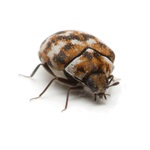 Carpet Beetles
Carpet BeetlesCARPET BEETLES AND OTHERS HASLEMERE & WATERLOOVILLE
Carpet Beetles come in many shapes, sizes and colour. Generally the carpet beetle looks like a ladybird in shape with its colour ranging from brown to black and even yellow and white. Adult carpet beetles are usually 2-3mm in length.
Adult Carpet Beetles tend to live outdoors and feed on nectar and pollen, making them less likely to be a pest. However, as food supplies dwindle towards late summer, they are more likely to enter your home and lay up to 40 eggs at a time in any natural fibres, such as curtains and carpets. The eggs hatch as larvae within 2 to 3 weeks and it is these larvae – sometimes called Woolly Bears – that do major damage, because their diet consists of any natural fibre such as carpets, soft furnishings and clothes. They can severely affect the quality of your furnishings; hence the need for control.
DIY products can deal with the problem in the short term, but professional treatment by a qualified Carpet Beetle control technician is often necessary to deal with them in the long-term.
KV PEST CONTROL has a comprehensive range of powerful insecticides to deal with Carpet Beetles and other types of Beetle invasion.
 Ants
AntsANTS HASLEMERE & WATERLOOVILLE
Ants are social insects that live in colonies. Each ant is a member of a highly organised colony which can be as large as millions of insects. Inside one single nest, there are workers, soldiers, drones and queens and colonies of ants can occupy and use a wide area of land to support them. There are about almost 12,000 known ant species, most of which are tropical. Ants are extremely social creatures and their ability to adapt to most environments has enabled them to live on almost every landmass on Earth.
While DIY products can deal with smaller ant problems or problems with garden ants, a professional ant pest control service will be required for larger or multiple infestations and this will certainly be the case when the ants are Pharoah’s Ants.
The most common ants in this country are:
1. Garden Ants (3-5mm long and dark brown almost black)
2. Pharoah’s Ants (2mm long and yellow/light brown)
3. Common Red Ant ( 6mm long and mainly red with darker pigmentation on head)
KV PEST CONTROL understands the habits of each species of ant and also has a range of powerful insecticides to deal with serious infestations. We can also provide you with the reassurance that the ant problem has been fully dealt with.
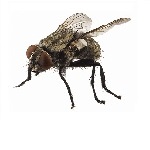 Cluster Flies
Cluster FliesCLUSTER FLIES HASLEMERE & WATERLOOVILLE
There are four main species of fly collectively known as cluster flies. They are:
- The Autumn Fly
- The Common Cluster Fly
- The Green Cluster Fly
- The Yellow Swarming Fly
Cluster flies are very common. The adult Cluster Fly hibernates during the winter season in roof spaces. The flies lay eggs in the earth and also in animal dung. As the temperature climbs in late Spring, the eggs will hatch.
The larval stage is parasitic, entering earthworms and feeding on them until the larva emerges as an adult Cluster Fly. There may be two to four generations of flies in one year.
Cluster Flies migrate from the outside conditions into the lofts of house and farm buildings during the winter. Obvious signs of an infestation include large quantities of lethargic/dead flies around windows. Once in roof spaces the flies will stay in hibernation until Spring.
Small infestations behind curtains and around windows can be simply removed with a vacuum cleaner.
For a larger problem, in areas such as loft spaces, treatment is best carried out by a qualified pest control technician after the first Winter frosts. This usually ensures that all of the hibernating flies are in the treatment area, resulting in a more cost effective solution. KV PEST CONTROL usually treats this problem with an insecticide space spray which quickly eradicates any cluster flies present.
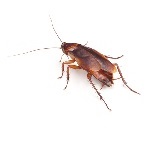 Cockroaches
CockroachesCOCKROACHES HASLEMERE & WATERLOOVILLE
Cockroaches are distinguished by their very long whip-like antennae, flat oval bodies and rapid, jerky gait.
The adult German Cockroach is 10 to 15mm long. The Common or Oriental cockroach is 20 to 24mm long. They find it difficult to survive out of doors in the British climate, which makes them a pest. They thrive around the heating ducts and boiler rooms of large centrally heated buildings e.g. hospitals, bakeries, hotel and restaurant kitchens, laundries and blocks of flats. They cluster around pipes, stoves, and sinks, especially in humid areas.
The German Cockroach carries its egg case, a small brown purse-like capsule, until the 30 or more nymphs are ready to hatch from it. The Oriental cockroach deposits its 13mm long egg capsule on packaging, sacking or in suitable dark crevices prior to the nymphs hatching out.
Cockroaches will eat any type of food and are mainly nocturnal. They travel from their inaccessible harbourages to feed; contaminating food, food utensils and food preparation areas as they move – hence the need for cockroach pest control.
Cockroaches taint food with an unpleasant odour and can carry various diseases, including bacteria that cause serious food poisoning.
Cockroach control is rarely an easy task because of the difficulty of getting the insecticide to the insect.
KV Pest Control applies an effective gel bait into all possible harbourages which will eventually spread into heart of any nest.
 Fleas
FleasFLEAS HASLEMERE & WATERLOOVILLE
Fleas are a small (2mm) wingless insect, flattened side to side and reddish-brown in colour. The Flea has spines that are pointed backwards and legs that enable it to jump.
All adult Fleas are parasitic on warm-blooded animals. Larval stages live in the nest of the host and feed on skin, feathers and, most importantly, the blood-rich faeces of the adult Flea. When fully grown the larvae spin camouflaged silken cocoons. When fully developed, the adult waits within this until it detects the vibrations caused by a potential host. Only then does it emerge.
The complete lifecycle of the Flea takes only four weeks in the summer months. Adult Fleas feed on blood. Their bites can cause intense irritation around a central bright red spot. Different people react differently to a bite, both in terms of degree of reaction and time taken to react – hence the need for Flea pest control and Flea treatment services.
The most common species in the UK is the Cat Flea, which bites humans. The Human Flea and the Bird Flea are the next common. Dog Fleas are less common, although other species may become briefly attached to dogs, whilst waiting for a more favourable host.
It’s best to treat infested pets with a special veterinary aerosol, powder, shampoo or Flea medication and burn any affected bedding. It’s good practice to also remove and destroy any old birds’ nests you find in eaves or loft spaces.
If you think there is a serious Flea infestation you will need KV PEST CONTROL to completely eradicate the problem with one visit.
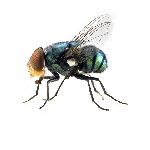 General Flies
General FliesGENERAL FLIES HASLEMERE & WATERLOOVILLE
Food is the main reason that flies (such as house files & bottle flies) are attracted into our homes. This is because it is a perfect environment for fly larvae to grow:
To Reduce Fly Infestations:
- Always cover food – diseases are spread by flies landing on food via their feet
- Clean food crumbs from underneath objects in the kitchen
- Clear away spillages
- Store compost effectively
- Tightly seal all refuse areas
- Clean up after pets. Not only are faeces the perfect breeding place for flies but also somewhere a fly may land before landing on your own food.
While off-the-shelf products can deal with smaller fly problems, a professional fly pest control service will be required for larger or more serious infestations.
KV PEST CONTROL has a comprehensive knowledge of each fly species and has a range of treatments to effectively deal with flies and minimise the nuisance caused by them. Our fly control service is professional, friendly and, most importantly, completely safe.
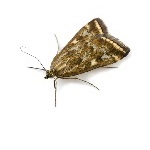 Moths
MothsMOTHS HASLEMERE & WATERLOOVILLE
Although most moths do not pose a health risk, some are classed as a pest because of the severe damage their larvae cause to clothes, fabrics, furs, leather and carpets.
While a minor infestation of moths can be dealt with using DIY products, an established moth problem is likely to require professional assistance.
Signs of a Moth Infestation
Fabric damage is a good indicator of Moth infestation. There are, however, several other signs to look out for:
- adult moths - these often crawl rather than fly
- maggot-like larvae (moth caterpillars)
- silky tubes or cases in which moth larvae live
- pupae (silk cocoons) in which the larvae become moths
Moths are usually drawn into our homes at night by light through open doors and windows. It is therefore advisable to keep windows and doors closed or invest in fly screens.
Once moths are inside your home they like to find dark, undisturbed areas to lay their eggs - usually where clothes or textiles are stored in spare rooms, under beds and rarely used storage space. Lofts are also ideal.
Dirty or soiled clothing is particularly attractive to moths, so it’s vital to clean garments before storing them away.
While off-the-shelf products can deal with smaller moth infestations, a professional moth pest control service will be required for larger or repeat infestations.
 Rats
RatsRATS HASLEMERE & WATERLOOVILLE
The most common species of rat found in the UK is the Norway or brown rat (Rattus norvegicus). They can carry diseases such as Salmonella, Weil’s Disease and Toxoplasmosis, hence the need for rat control.
Rats came to reside in the UK through the shipping traffic from around the world in the 18th century and became one of the most detested pests because of problems they cause. Their constant gnawing can cause numerous problems from fires to structural damage and they also taint foodstuffs.
A rat infestation in the home is an extremely serious problem and will need a qualified technician to remedy. Rats in the garden/surrounding areas are also a serious issue and will need the relevant steps taken to ensure they don’t enter the home /buildings.
Obvious signs of a rat infestation are as follows:
- 3-5mm rod shaped droppings
- Holes in walls & floors
- Footprints followed by tail dragging marks
- Smears on walls left by dirty fur after contact
KV PEST CONTROL will offer a complete survey and bait laying programme to eradicate Rat infestations. My own unique blend of Rodenticide and Rat attractants ensures great palatability for effective Rat control.
 Mice
MiceMICE HASLEMERE & WATERLOOVILLE
What species of mouse do you have?
You may think one mouse is the same as another but in the UK there are several species of mice. If it has come indoors it's probably one of two species - a house mouse or a long tailed field mouse. Pest control techniques remain the same for both species.
- The House Mouse (scientific name Mus domesticus) is the most likely mouse to be found indoors. It will survive outdoors in warmer climates but in the UK it prefers the warmth of buildings and finds it rarely necessary to go outside. It has grey-brown fur which is slightly lighter in colour underneath. If you can get close enough you will see that its tail, although long, is about 80% of its body length and its eyes and ears are in proportion to its head.
- The Long Tailed Field Mouse, also known as the Wood Mouse (scientific name Apodemus sylvaticus) can also come into buildings particularly if the location is more rural. In contrast to the house mouse it is a chestnut brown colour and white underneath. Its eyes are noticeably bulging and ears large and its tail is about the same length as its body.
Prior to treatment, a survey of the site should take place to decide on the extent and size of the mouse infestation. Our mouse control survey continues on to adjoining areas (as mice may travel from other areas to feed or drink then return to a harbourage).
Housekeeping, stacking, proofing and cleaning etc. all form part of an integral mouse pest control programme. We use a whole host of protective equipment in our service to remove mice.
The following are indicators of a mouse infestation:
- Holes
- Droppings
- Runs
- Smear marks
- Damage
- Tracks
- Nests
- Dead and live mice
Mice produce an unforgettable and distinct odour in nests sites and harbourages
Mice can cause extensive damage to property as a result of their gnawing. They are also carriers of fleas and a wide range of diseases, which can be passed on to humans and household pets.
KV PEST CONTROL will offer a complete survey and bait laying programme to eradicate all Mice infestations. KV Pest Control only uses top grade wheat tech rodenticides for complete Mice control.
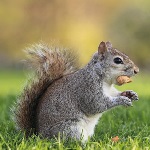 Grey Squirrel
Grey SquirrelGREY SQUIRREL HASLEMERE & WATERLOOVILLE
The Grey Squirrel (Sciurus carolinensis) is an invasive species and not native to the British Isles. Grey Squirrels will readily inhabit lofts, attics and roof spaces as well as outbuildings. Signs of their presence will be scratching noises and droppings. However, these can be mistaken for rat droppings. A qualified technician will be able to identify the difference between the two. Grey squirrels may pass fleas to domestic animals (this can be treated using animal flea treatments) hence the need for squirrel control or a squirrel catcher. They are not thought to carry human diseases but can administer a painful bite if they are frightened.
Although the Grey Squirrel is attractive, appealing and entertaining, it can be a serious pest in the garden and especially to a bird lover. It is very bold and soon learns to take food from bird tables, chew through peanut feeders (only ever use steel ones to minimise this) and take seeds from tube feeders. In addition, if it isn’t always able to get the food from the feeder, it will seriously damage it and often to the point that the feeder is no longer usable. Squirrels will also damage trees by chewing off bark (which can kill small or young trees).
KV PEST CONTROL will remove your squirrel problem by laying suitable traps and bait where appropriate. 100% guarantee success rate with tried and tested baiting for Grey Squirrel.
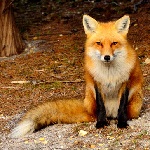 Foxes
FoxesFoxes HASLEMERE & WATERLOOVILLE
The Red Fox (Vulpes vulpes) is an often controversial ‘pest’. It is part of the dog family, and also has a number of feline characteristics, making it appealing in appearance. However, in some cases, it can cause a lot of damage to your property, or to livestock. That's why KV PEST CONTROL is trained to deal with foxes effectively and safely.
If you have a Fox related pest control problem, the nature of the problem is likely to depend on where you are situated.
- The Urban Fox. If you are in an urban, or suburban location then the main issues tend to be damage caused in the garden through activities such as digging up flower beds, or ripping through refuse bags. If you keep pets in the garden such as rabbits, and if the cages are not properly secured or if they run free, then they could also be in danger from foxes.
- The Rural Fox. If you are in a rural area, you can have all the problem of the urban fox as well as a few others. If you keep livestock such as chickens, for instance, foxes may be a threat.
There are some legal restrictions on how to get rid of Foxes. It is not legal to poison a fox.
In either case of course, control should only be employed by trained professionals such as the pest control experts from KV PEST CONTROL
 Spiders
SpidersSPIDERS HASLEMERE & WATERLOOVILLE
Spiders can be a difficult pest in the home. Their preferred habitat is warm, dark small spaces. Most people find spiders a problem because of their webbing. However, Spiders can also be beneficial because they devour pests themselves. Less than a 1000 species of spider reside in the UK. Some common species of spiders that can be found entering your home are:
- Common House Spider
- Cellar Spider
- Wolf Spiders
- Sac Spiders
5 Simple Spider Pest Control techniques in the home
- Remove spider webs
- Vacuum frequently
- Fill in any wall gaps and cracks
- Remove clutter that makes attractive accommodation for spiders
- Make your home less attractive to the spider’s prey with good lighting
Serious spider infestations will prove exceptionally difficult to contain and you may require the services of KV PEST CONTROL.
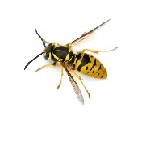 Wasps
WaspsWASPS HASLEMERE & WATERLOOVILLE
People often have an inherent fear of wasps. They are large, conspicuous buzzing insects with yellow and black striped, narrow bodies and measure 10-15mm long. They have a sweet tooth at one end and a painful sting at the other.
The larger queen wasp hibernates over winter, and then makes a nest in the spring in which to lay her eggs. She feeds her young on insects until they grow into worker wasps, around three to four weeks later. Workers (all sterile females) forage for over a mile in search of food. A single nest can produce 30,000 wasps in a year.
From August to September, wasps are particularly renowned for becoming a nuisance.
If you find a wasps nest in a wall or bank it needs to be thoroughly sprayed with insecticide dust. This can be hazardous and is best performed by KV PEST CONTROL who will treat and then return for a free re-visit if the nest picks up again.
 Birds
BirdsBIRDS HASLEMERE & WATERLOOVILLE
Birds can be a problem when they find their way into a building when looking for food or simply looking to roost and be sheltered. This can cause an undesirable effect visually and in terms of health.
Major bird control issues:
- Risk of infection
- Damage to property
- Additional insect pests can lead to bites and textiles damage
- Bird droppings also increase the risk of people slipping and falling.
There are several signs of a bird infestation:
- Bird droppings
- Nests
- High levels of insect infestation
- Associated insect pests such as fleas and flies
- Bad smells
Our approach to bird control is systematic. Firstly we survey the extent of the problem. This will then guide us to the most effective method of action.
KV PEST CONTROL offers safe, tried and tested bird control techniques including trapping and shooting and building proofing, which is followed by humane destruction.
